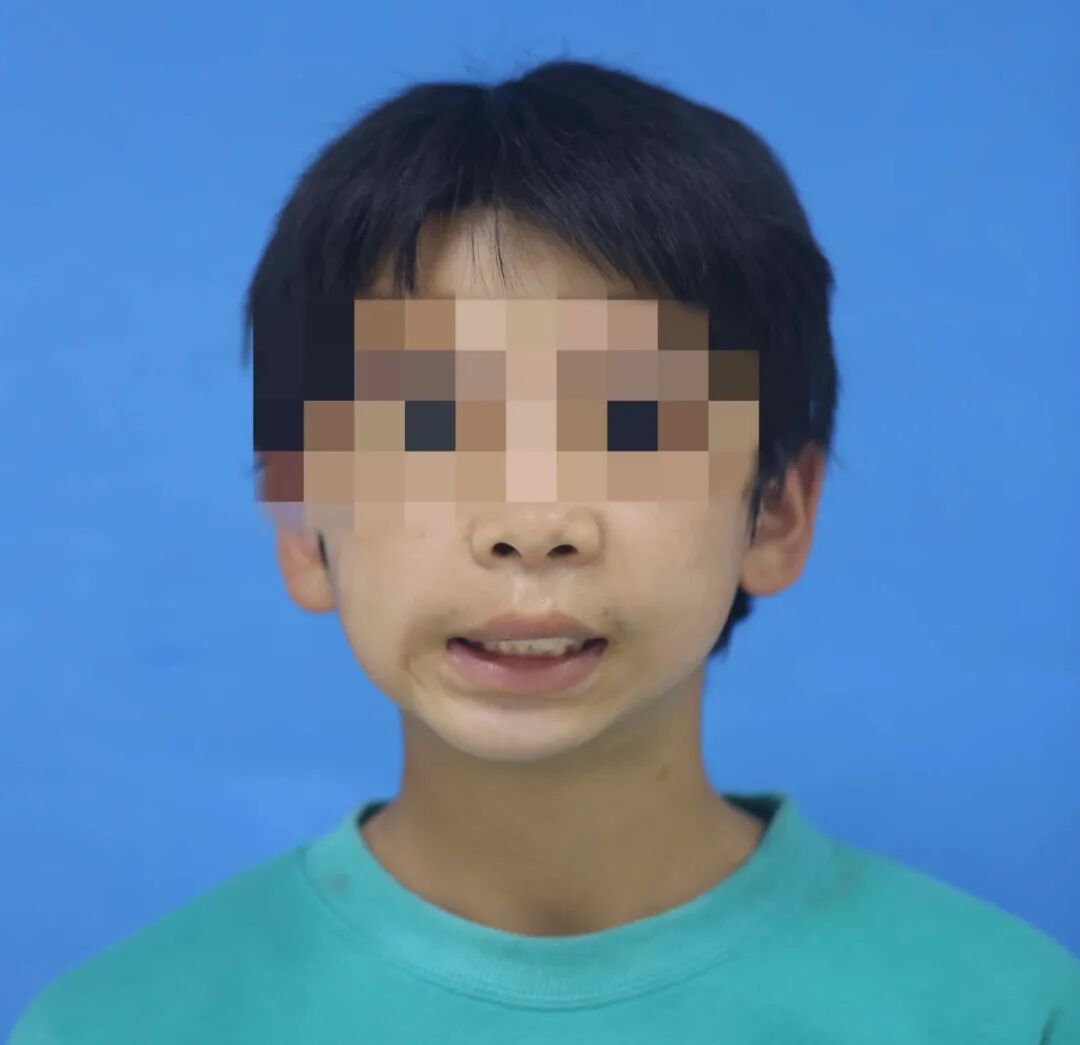A 14-year-old boy, Xiaotian (pseudonym),
has a “difficult-to-speak-of” ailment.
He cannot open his mouth wide,
even with all his strength.
The oral opening is less than the width of a finger.
He cannot laugh heartily,
and even struggles to eat normally.
Simple actions like opening his mouth are as difficult as climbing a mountain for him.

It turns out Xiaotian suffers from temporomandibular joint ankylosis.Eight years ago, Xiaotian had an infection in the root of a milk tooth on the right side of his jaw, which was not effectively treated at the time, leading to osteomyelitis of the mandible.Long-term inflammation affected the development of his jawbone, causing the right temporomandibular joint to not develop along with his body, resulting in intermittent difficulties in opening his mouth and facial asymmetry. This not only affected his appearance but also “sealed” his oral function.Being sensitive, he often felt inferior because of this, impacting his mental health.
Recently,
Xiaotian visited the Oral and Maxillofacial Surgery Department at Ningxia Medical University General Hospital.
The trauma, orthognathic, and joint team in this department carefully devised a precise treatment plan for him.
They decided to use digital 3D printing technology
to reconstruct Xiaotian’s right mandible.
This is a complex process.First, 3D printing technology is used to design the placement of the distraction osteogenesis device. In the first phase, distraction osteogenesis is performed on the mandible to achieve the goal of elongating the mandible and soft tissue.Four months later, a second surgery is performed to remove the distractor. Using a digital 3D printed osteotomy guide and a model of the mandible, the ankylosed part of the mandible is excised. At the same time, a small segment of the patient’s rib cartilage is taken to reconstruct the temporomandibular joint, achieving the goal of reconstructing the right mandible.With the powerful combination of 3D printing technology and distraction osteogenesis, the surgery was successfully completed.Post-surgery, Xiaotian achieved a good occlusion, and his oral function for speech and chewing returned to normal, with facial shape and mouth opening restored.Dr. Cao Kun, Deputy Chief Physician of the Oral and Maxillofacial Surgery Department at Ningxia Medical University General Hospital, stated that in the future, the right mandible ramus reconstructed from the patient’s rib will develop along with the facial bones.How amazing is distraction osteogenesis technology?Dr. Cao explained that distraction osteogenesis involves cutting the bone, placing special distractors on both sides of the cut, and after a certain delay, slowly distracting the gap (about 1mm to 1.5mm per day), which widens the gap and stimulates the body’s tissue regeneration potential, continuously forming new bone tissue within the distraction gap. At the same time, the surrounding muscles, nerves, and blood vessels are also elongated, achieving the goal of elongating the bone. This artificially “heightened” bone is as strong as normal bone.It is reported that this is the first case in Ningxia of distraction osteogenesis technology combined with 3D digital printing and autologous rib transplantation to reconstruct the right temporomandibular joint and mandible ramus, filling a gap in this technology in the region.
Popular Science Knowledge The two main causes of temporomandibular joint ankylosis are trauma and inflammation.Currently, traumatic temporomandibular joint ankylosis is more common.Some patients do not receive effective standardized treatment after condylar trauma, leading to limited mouth opening and a series of issues such as chewing, digestion, speech, and oral hygiene.Joint ankylosis occurring in childhood can lead to skeletal deformities of the entire jaw and face.Its manifestations include facial asymmetry or micrognathia, depending on whether the disease is unilateral or bilateral. In unilateral cases, the jaw deformity is characterized by an inclination of the occlusal plane, while in “bird beak deformity,” there is insufficient vertical height of the maxilla. Mandibular retrognathia affects the size of the oropharynx, and in severe cases, it can even obstruct the airway. Long-term contraction of the masticatory muscles leads to elongation and thickening of the coronoid process, shortening of the mandible ramus, retrognathia of the chin, and formation of anterior notches on the mandible angle.
Reporter: Shen Yating
Reviewed by:Ma Lingyan Liu Peihao
Editor: Fu Yang

“Share + Like + View”
Let more people know!